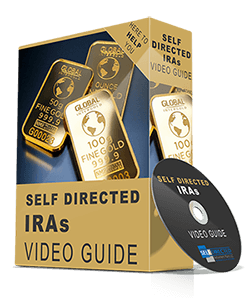Are you considering your retirement savings strategy? When it comes to planning for your financial future, navigating the maze of retirement accounts can feel overwhelming. One of the most popular topics that often come up in such conversations is “457(b) vs. Roth IRA”.
Do you want to know which account might be the best fit for your financial goals? Well, you are in luck, as this blog post explores the key differences between the 457(b) and the Roth IRA. By the end, you’ll be equipped with the knowledge to make informed choices about your retirement savings. So, let’s embark on this financial journey together!
What is a Roth IRA?
A Roth IRA is a retirement account in which you contribute previously taxed funds. The most significant benefit is that your investments can grow tax-free. So, when you retire, your withdrawals and earnings are tax-free.
This option is available to everyone, generating an income that meets IRS standards. It provides you with a variety of investing options to help you develop your wealth gradually.
Want to dive deeper into Roth IRAs? Check out our comprehensive guide on Roth IRA.
What is a 457(b)?
State and local government employees, as well as non-profit employees, can use a 457(b) plan to save for retirement. These programs typically allow payments before taxes. They are deducted from your income, providing instant tax savings. You can even choose to make Roth contributions with after-tax funds in these accounts.
This flexibility allows you to save more efficiently for the future while perhaps benefiting from tax breaks now and then.
Explore how a 457(b) can work for you. Check out our detailed article on 457(b) plans today!
457(b) vs. Roth IRA
You can take a quick overview of the key differences between the Roth IRA and 457(b) Plan with the help of this comparison table, followed by their detailed explanation:
| Aspect | Roth IRA | 457(b) Plan |
|---|---|---|
| Tax | Contributions taxed; withdrawals tax-free | Contributions pre-tax; withdrawals taxed |
| Eligibility | Anyone with earned income | Government and non-profit employees only |
| Investment Opportunity | A wide variety of investments | Limited to plan offerings |
| Maximum Yearly Contribution Allowed | $7,000 (2024); $8,000 if 50+ | $23,000 (2024); $30,000 if 50+ |
| Required Minimum Distributions | None during the account owner's lifetime | Must begin by age 72 |
Taxation
-
Roth IRA
Roth IRAs allow for after-tax contributions, which means you pay taxes on your income before contributing to the account. Earnings increase tax-free and can be withdrawn tax-free at age 59½ and five years of account ownership.
-
457(b) Plan
A 457(b) plan allows for pre-tax contributions, lowering taxable income in the year of contribution. Taxes are due upon withdrawal, which often occurs at retirement when you may be in a lower tax bracket.
Eligibility
-
Roth IRA
There are no age or work limitations to contribute to a Roth IRA. However, your contribution amount is limited by your income. For 2024, the eligible phase-out begins with $138,000 for solo taxpayers and $218,000 for married couples filing jointly. If your income exceeds these limits, your ability to contribute to a Roth IRA is reduced.
-
457(b) Plan
Eligibility for a 457(b) plan is typically limited to state and local government employees or selected non-profit organisations. There are no income limits for contributions, making it an appealing choice for high-earning individuals in specific industries.
Investment Options
-
Roth IRA
Roth IRAs provide a wide range of investment alternatives, including equities, bonds, mutual funds, exchange-traded funds, and, in some situations, real estate. This flexibility enables you to create a diversified portfolio based on your risk tolerance and investing objectives.
-
457(b) Plan
On the other hand, 457(b) plans often have a smaller number of investment possibilities, which are mostly selected by the plan sponsor. While some plans may provide a number of mutual funds and investment opportunities, these may not be as extensive as those offered through a Roth IRA.
Annual Contribution Limits
-
Roth IRA
Annual Roth IRA contribution limits for 2024 are $7,000 and $8,000 for individuals over 50. This restriction applies to all of your IRAs combined. It is critical to consider these limits when planning your retirement savings, as maximizing contributions can have a big impact on your financial future.
-
457(b)
The contribution ceiling for a 457(b) plan is significantly greater, with a maximum of $23,000 in 2024 and an extra $7,000 catch-up contribution for individuals over 50. Furthermore, specific plans may include a particular catch-up option for employees within three years of retirement.
Required Minimum Distributions
-
Roth IRA
Roth IRAs offer considerable benefits, including no Required Minimum Distributions (RMDs) during the account owner’s lifetime. This feature allows the account to continue growing without the pressure of having to withdraw cash, giving you more flexibility in retirement planning.
-
457(b) Plan
Account holders in 457(b) plans, like those in standard IRAs and 401(k) plans, must begin taking minimum distributions by the age of 72. This forced withdrawal can influence your retirement strategy because you may be required to withdraw money even if it is not needed for living expenses.
457(b) VS Roth IRA – What is Right for You?
When deciding whether to contribute to a Roth IRA or a 457(b) plan, examine your financial circumstances, tax ramifications, and retirement objectives. Here are some critical questions to ask yourself.
-
What is your current and expected future income?
If you anticipate being in a higher tax bracket during retirement, a Roth IRA may be more beneficial. Conversely, if you expect to be in a lower tax bracket, a 457(b) plan may suit you better.
-
What is your employment status?
If you work for a government agency or a qualifying non-profit, a 457(b) plan may be an option you can take advantage of. Whereas Roth IRAs are available to anyone who meets the income requirements.
-
How do you want to manage your investments?
Suppose you prefer a broad selection of investment options and want more control over your portfolio. In that case, a Roth IRA may be the way to go. If you are comfortable with a more limited range of options, a 457(b) plan can work for you.
457(b) VS Roth IRA – Advantages and Disadvantages
It’s crucial to delve into the advantages and disadvantages of each option.
Advantages of a Roth IRA
- Tax-Free Withdrawals: Qualified withdrawals are tax-free, providing significant savings for retirees.
- No RMDs: You are not forced to withdraw funds during your lifetime, allowing for continued growth.
- Diverse Investment Opportunities: You can choose from a wide range of investment options.
Disadvantages of a Roth IRA
- Income Limitations: Higher earners may face reduced contribution limits.
- After-Tax Contributions: Contributions are made after paying taxes, which may be a concern for some people.
Advantages of a 457(b) Plan
- Higher Contribution Limits: It allows for larger contributions, which is especially beneficial for those nearing retirement.
- Pre-Tax Contributions: Contributing pre-tax can significantly reduce current taxable income.
- No Early Withdrawal Penalties: Withdrawals made before age 59½ are not subject to penalties, provided you separate from the service.
Disadvantages of a 457(b) Plan
- Limited Investment Choices: Investment options may be restricted, limiting growth potential.
- RMDs Required: You must begin taking distributions at age 72, which could impact financial planning.
In conclusion, Roth IRAs and 457(b) plans have distinct benefits and drawbacks that can be tailored to individual financial conditions and retirement goals. As you plan for retirement, remember that it is never too early or too late to begin saving. Consider your options and your goals, and work with a financial expert to ensure you are on the right path.
Knowledge is power when it comes to securing your financial future, and we are here to help you every step of the way!
Are you eager to learn more about retirement strategies and how to maximize your savings? Don’t hesitate to contact us now!
FAQs
Can I make contributions to both a Roth IRA and a 457(b) plan?
Yes, you can contribute to both a Roth IRA and a 457(b) plan. However, keep in mind that each has different annual contribution limits.
Can I convert my 457(b) plan to a Roth IRA?
It’s feasible to roll over your 457(b) plan into a Roth IRA. However, keep in mind that doing so can result in immediate taxes on your 457(b) profits.

My goal is to assist clients/investors in their quest for financial freedom and creating generational wealth through one on one consultation and an abundance of online tools to educate. For the past 5 years I have been a private pension plan consultant with Self Directed Retirement Plans working directly with my partner Rick Pendykoski (owner) or you can .




